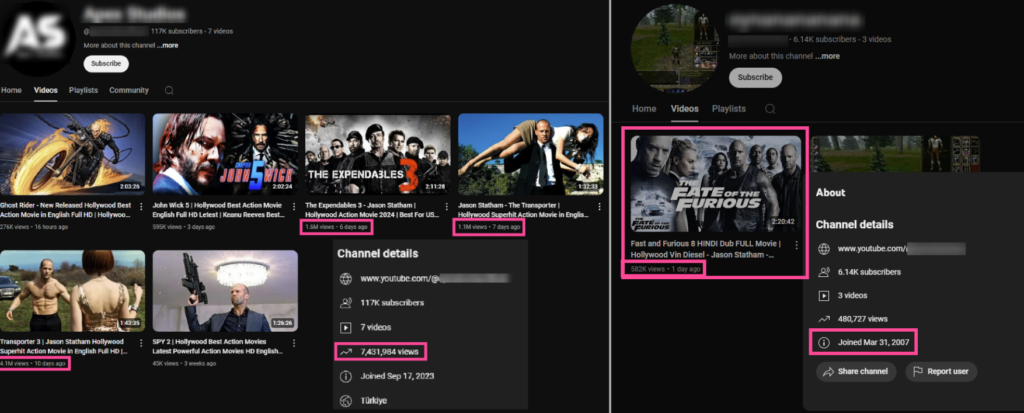Despite ongoing efforts by YouTube and rights holders to combat piracy, determined users still manage to upload pirated movies. Recently, however, an unusual trend has emerged: long-dormant channels, some inactive for over 15 years, along with newer channels with no history of infringement, are suddenly hosting the latest Hollywood blockbusters. These uploads have garnered tens of millions of views, though the actual number could be much higher.
On April 24, 2007, a YouTube user known as “haroldlky” created a channel and uploaded three engineering-themed videos, totaling just 42 seconds of content. Over the next 17 years, these videos attracted fewer than 400 views. It’s unclear whether “haroldlky” was content with this or ever revisited YouTube. However, if he checked his channel today, he’d likely be surprised to find it has become a hotspot for pirated movies.

While it’s impossible to trace every affected channel, a few examples stand out. For instance, a channel created on September 17, 2023, with 117,000 subscribers and only seven videos, has amassed 7.4 million views in just 10 days, primarily from pirated films. Another channel, created on March 31, 2007, with just three videos and 6,100 subscribers, saw one pirated movie, “Fate of the Furious,” rack up 582,000 views within a single day.
Understanding the Mechanism
It’s still unclear who is behind this surge in movie piracy or why these channels are being used. However, the sudden pivot from content like math tutorials to Hollywood blockbusters suggests that the channels might have been compromised. In less than two weeks, rogue uploads on these channels have collectively gathered nearly a million views.
One possible explanation involves the manipulation of YouTube’s Content ID system. For instance, a recent upload of the Netflix series “The Gentlemen” included a music track by “Zoxer” titled “Forward.” This track may have been either manually entered or automatically matched by Content ID, though searches reveal no record of the track in the actual series.
The Scheme: How It Works

Recent updates shed light on how these pirated movies are bypassing Content ID:
- Create or obtain audio tracks that aren’t detected by Content ID.
- Illegally register these tracks with digital distribution services like DistroKid, CD Baby, or TuneCore, which remain unaware of the fraud.
- Obtain a popular movie to attract a large audience.
- Use software to attach the audio track to the end of the movie.
- Upload the resulting video to YouTube.
- Wait for a content match on the music, which monetizes the entire video.
- Earn a small profit or nothing at all if royalty collection agencies uncover the fraud.
The Bigger Picture
This new trend raises several questions. While YouTube is not required to proactively police content, it’s surprising that the platform’s anti-piracy measures have been so effectively circumvented. The fact that these pirated movies are being viewed millions of times with no reports or takedowns is noteworthy.
Initial impressions suggest a possible connection to India, based on the nature of comments and other factors. However, the real issue may be why these uploads seem to completely bypass YouTube’s Content ID system, particularly for new and popular movies. Whether due to a glitch, missing fingerprints, or some other loophole, the sheer number of views these pirated movies are accumulating is staggering.
